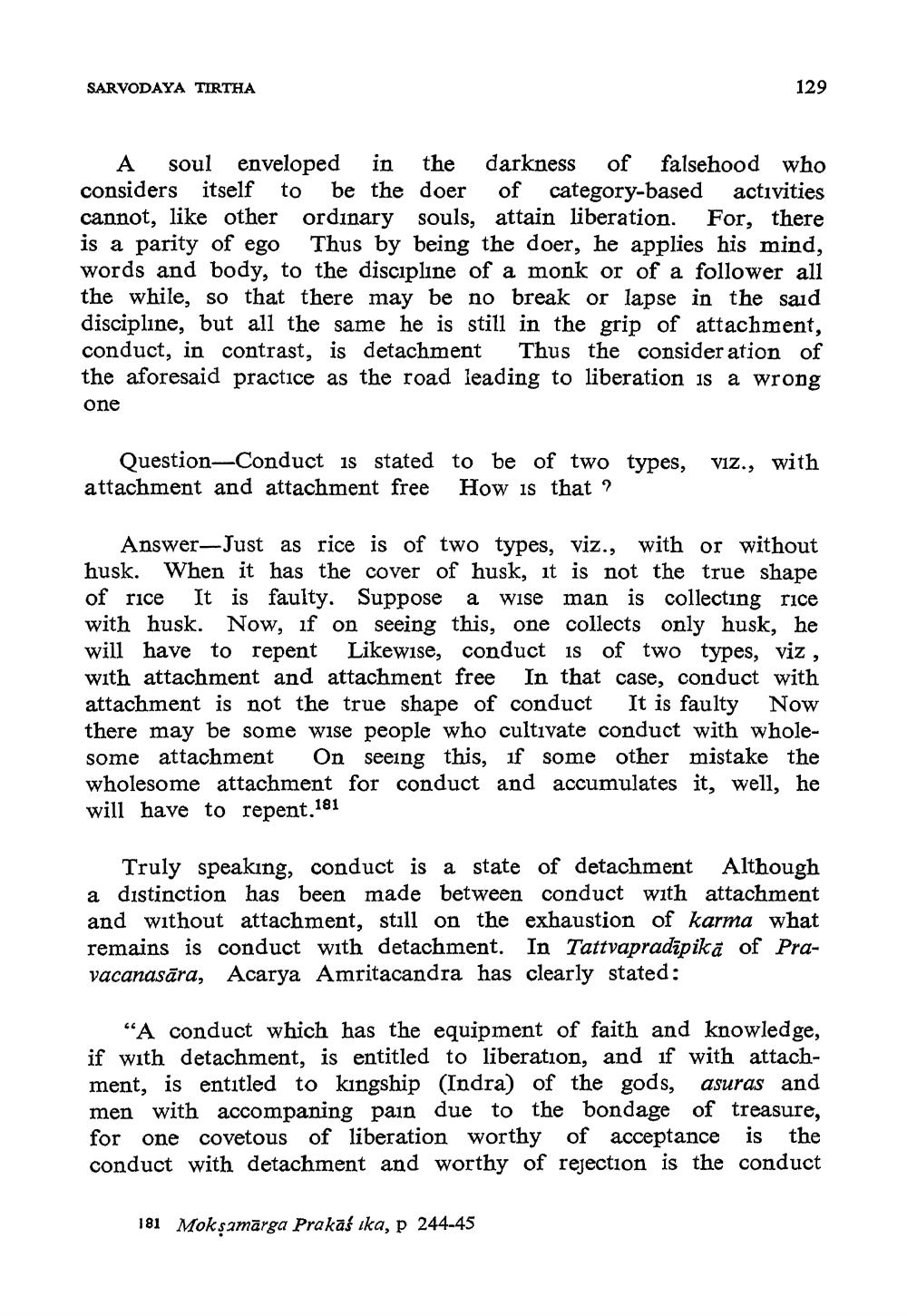________________
SARVODAYA TIRTHA
129
A soul enveloped in the darkness of falsehood who considers itself to be the doer of category-based activities cannot, like other ordinary souls, attain liberation. For, there is a parity of ego Thus by being the doer, he applies his mind, words and body, to the discipline of a monk or of a follower all the while, so that there may be no break or lapse in the said discipline, but all the same he is still in the grip of attachment, conduct, in contrast, is detachment Thus the consideration of the aforesaid practice as the road leading to liberation is a wrong one
Question-Conduct is stated to be of two types, viz., with attachment and attachment free How is that?
Answer-Just as rice is of two types, viz., with or without husk. When it has the cover of husk, it is not the true shape of rice It is faulty. Suppose a wise man is collecting rice with husk. Now, if on seeing this, one collects only husk, he will have to repent Likewise, conduct is of two types, viz , with attachment and attachment free In that case, conduct with attachment is not the true shape of conduct It is faulty Now there may be some wise people who cultivate conduct with wholesome attachment On seeing this, if some other mistake the wholesome attachment for conduct and accumulates it, well, he will have to repent.181
Truly speaking, conduct is a state of detachment Although a distinction has been made between conduct with attachment and without attachment, still on the exhaustion of karma what remains is conduct with detachment. In Tattvapradāpikā of Pravacanasāra, Acarya Amritacandra has clearly stated:
"A conduct which has the equipment of faith and knowledge, if with detachment, is entitled to liberation, and if with attachment, is entitled to kingship (Indra) of the gods, asuras and men with accompaning pain due to the bondage of treasure, for one covetous of liberation worthy of acceptance is the conduct with detachment and worthy of rejection is the conduct
181 Mok samārga Prakašika, p 244-45




